Why not try Warabi Mochi, a traditional Japanese sweet with a mildly sweet flavor and a soft, chewy, jelly-like texture? Once you have gathered the ingredients, it is easy to make with a simple process.
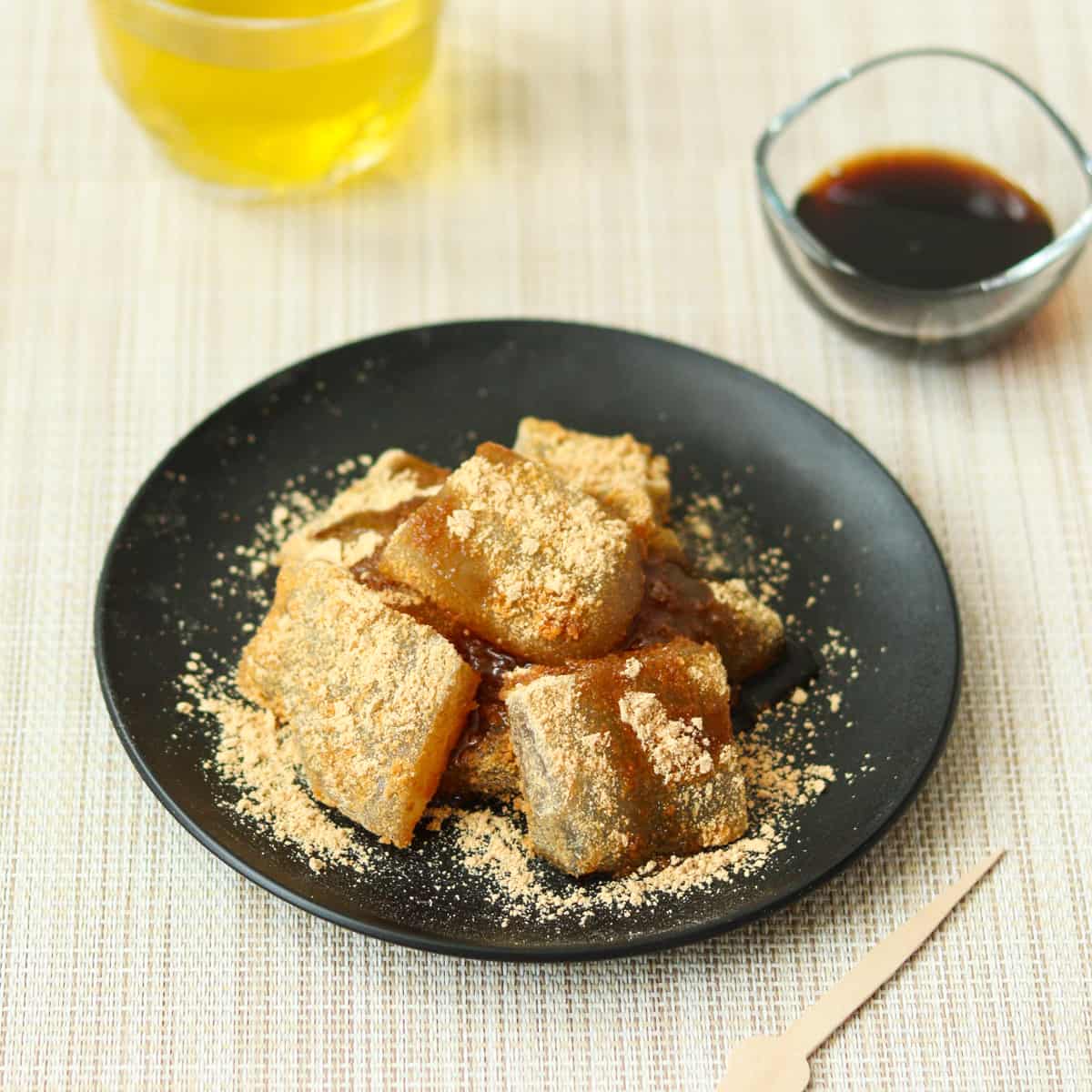
Jump to:
What is Warabi Mochi?
Warabi Mochi is a traditional Japanese sweet made by cooking a mixture of bracken starch (known as warabiko or warabi mochiko) and sugar dissolved in water. "Warabi" means bracken fern, and "Mochi" refers to Japanese rice cakes. Despite not containing any actual mochi or even mochi ingredients, it is called warabi mochi because its texture is similar to that of mochi.
To preserve the delicate flavor of the bracken starch, warabi mochi itself isn’t sweetened; instead, it’s typically served with toppings like kinako (roasted soybean flour) or kuromitsu (brown sugar syrup), allowing you to adjust the sweetness to your liking.
Thanks to its translucent appearance, this treat has been enjoyed in Japan for over a thousand years. While the ingredients may have been slightly different in the past, the basic preparation method and flavor have remained largely unchanged. Enjoy this traditional Japanese dessert, cherished both in the past and today, at your own table.
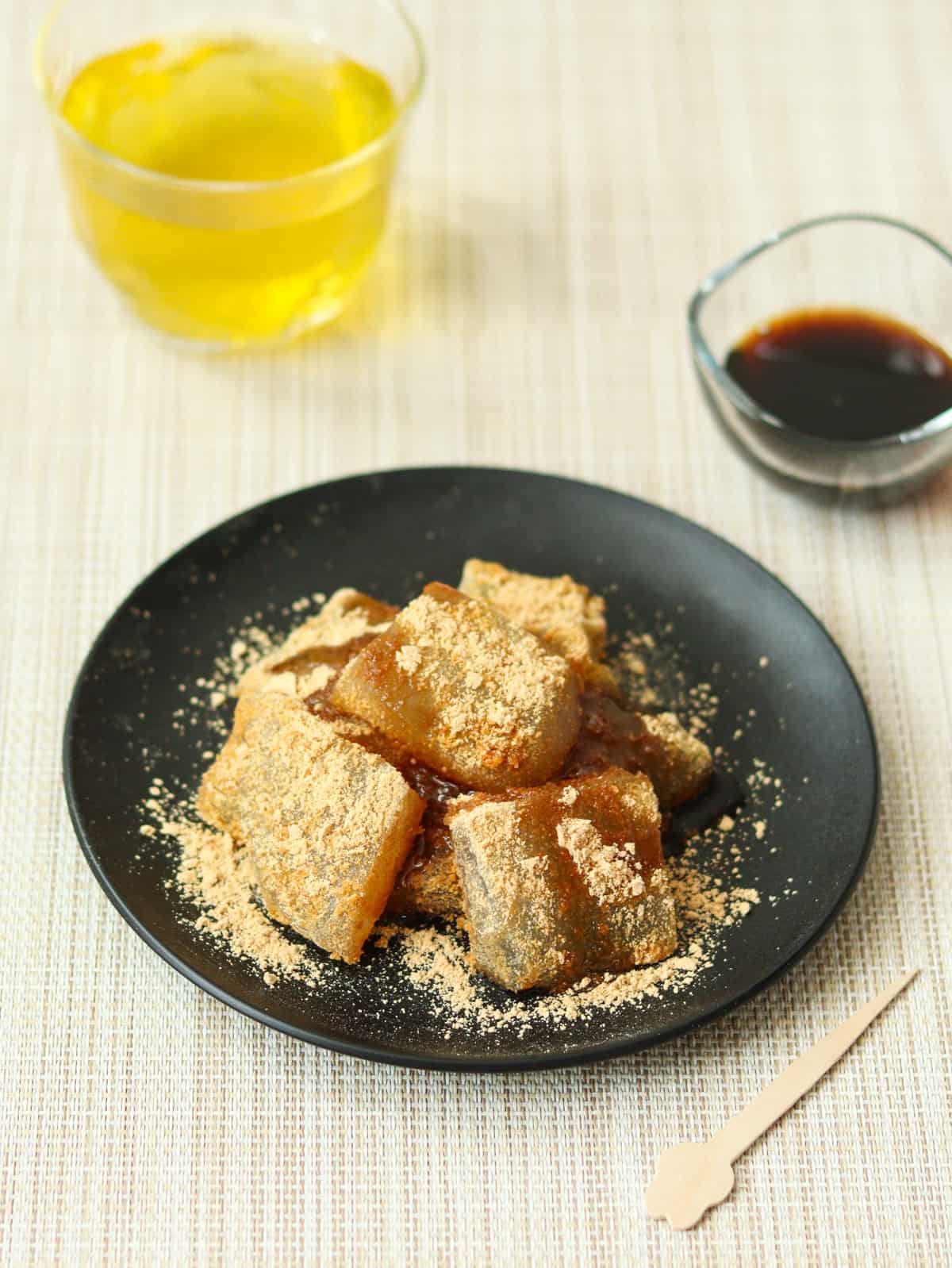
Warabiko vs. Warabi Mochiko: What is the difference?
Simply put, warabi mochi comes in two variations: one with a dark, translucent appearance and the other with a colorless, translucent appearance. These differences stem from the ingredients used to make this treat, specifically whether it is made with warabiko or warabi mochiko.
Warabiko refers to the starch extracted solely from the roots of the bracken fern. In contrast, warabi mochiko is made from a blend of starches, including those derived from ingredients such as kudzu, potatoes, sweet potatoes, and tapioca, in addition to bracken fern. When dissolved in water, warabiko becomes dark, while warabi mochiko turns whitish.
This distinction exists because pure warabiko is extremely rare, time-consuming to refine, and quite expensive. Even if you come across a product labeled "warabiko," keep in mind that it might actually be "warabi mochiko," which contains other starches. Therefore, when purchasing warabiko, it is best to check the ingredient list carefully.
Exploring traditional and modern warabi mochi
So, does that mean warabiko is commonly used to make warabi mochi? Actually, not at all—in fact, it is quite the opposite.
Originally, warabi mochi was indeed made with pure warabiko. However, as the production of warabiko declined over time—starting around 400 years ago—kudzu starch began to be mixed in, and more recently, other starches have also been added. Today, it is far more common to use warabi mochiko, a blended starch that contains bracken starch, when making this treat. I also use warabi mochiko when taking the photos for this page.
That said, traditional warabi mochi made with warabiko is still enjoyed and is also known as hon warabi mochi (authentic warabi mochi). It is so soft that picking it up with chopsticks can be tricky, and it melts smoothly in your mouth.
You can make warabi mochi with either warabiko or warabi mochiko, but if you happen to come across pure warabiko and can afford it, I highly recommend using it to make hon warabi mochi. It is fun to experience how the texture changes depending on which starch is used.
A practical alternative to warabi mochi starch
The key ingredient for making warabi mochi is warabiko or warabi mochiko, which can usually be found at Asian markets. However, some people may have trouble finding it.
In that case, you can try using potato starch as a substitute. While it won’t make true warabi mochi, it will give you something with a similar texture and consistency.
Since warabiko or warabi mochiko is used almost exclusively for making this treat, even in Japan, potato starch is considered a practical alternative—especially for those who feel it is wasteful to buy it just for that purpose. The texture may be slightly different, but you can still enjoy a treat that captures the essence of traditional Japanese cuisine.
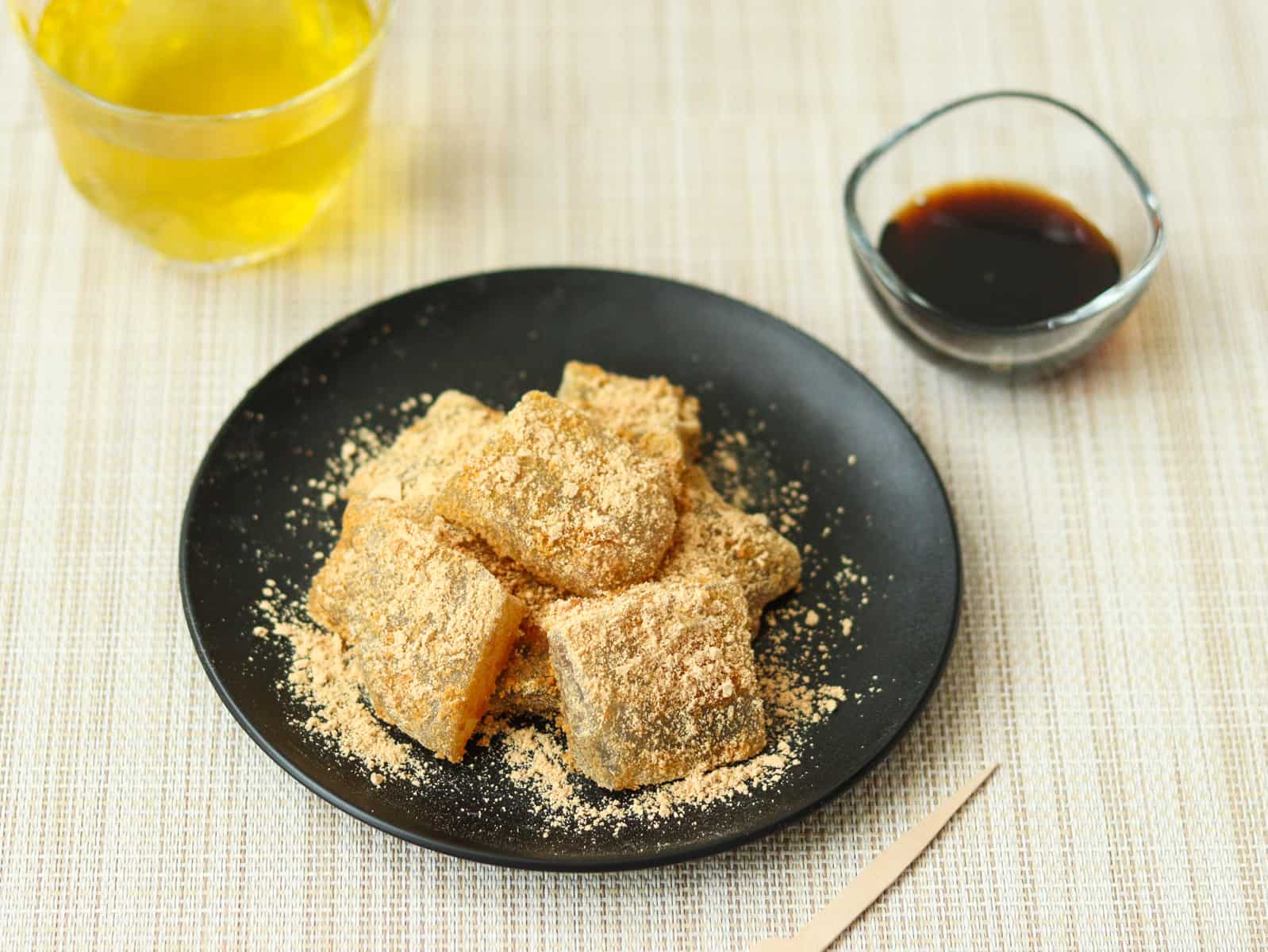
📋Step-by-step recipe
Ingredients
- 1.8 oz warabi mochiko or warabiko (bracken starch)
- 2 Tbsp sugar
- 1 ¼ cups water
Toppings:
- 1 Tbsp kinako (roasted soybean flour)
- 2 tsp sugar (optional, omit if serving with kuromitsu)
- 2 Tbsp kuromitsu (brown sugar syrup) (optional, omit if serving with sugared kinako)
Instructions
🕒 Total: 40 mins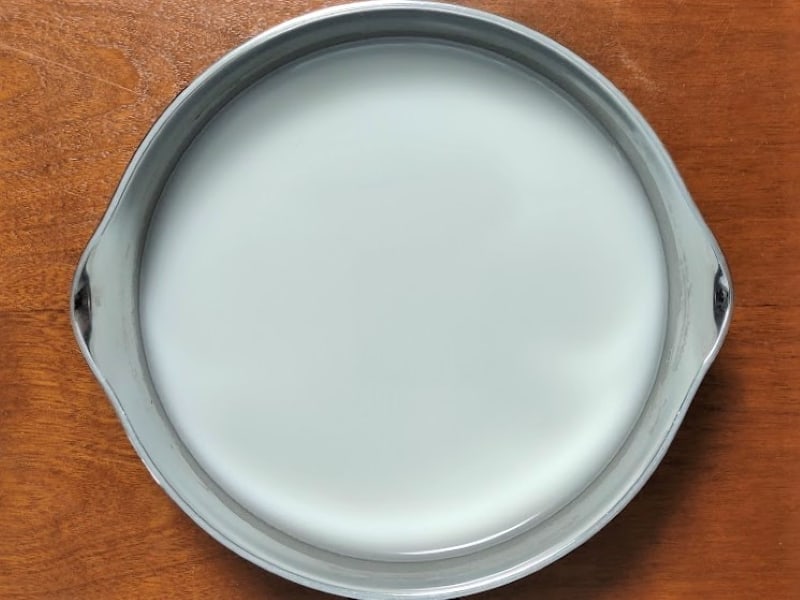
Step 1
Combine warabi mochiko (or warabiko), sugar, and water in a pot.
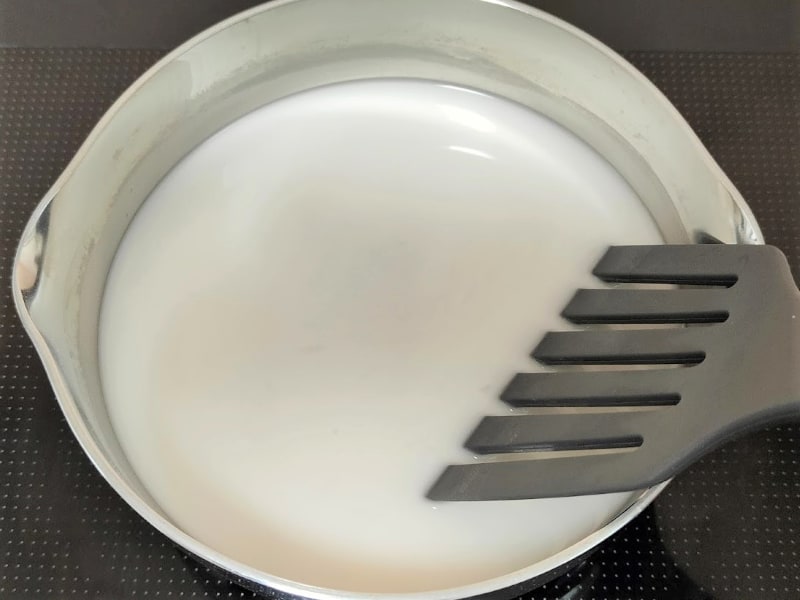
Step 2
Heat the pot over medium heat, stirring constantly with a spatula until the mixture starts to thicken.
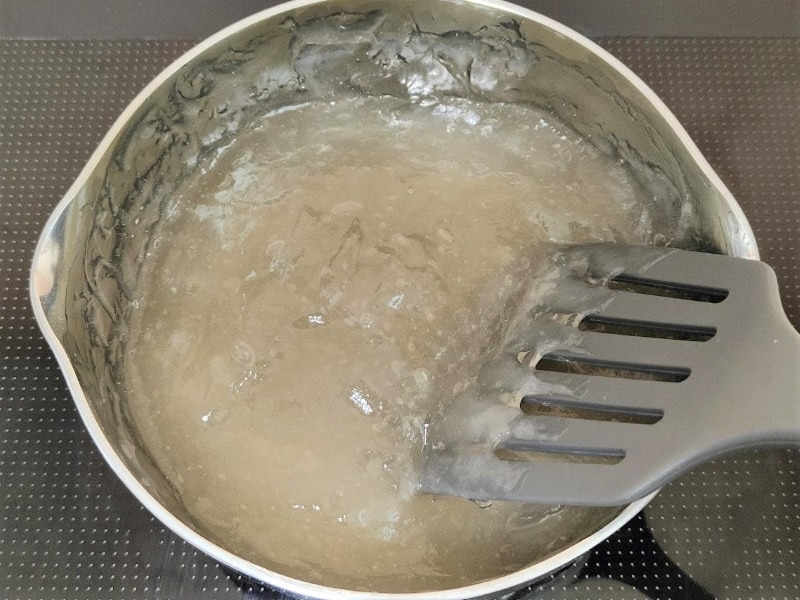
Step 3
Reduce the heat to low and continue stirring until the mixture gradually solidifies and turns translucent. Keep stirring for a few more minutes after it becomes clear, then remove from the heat.
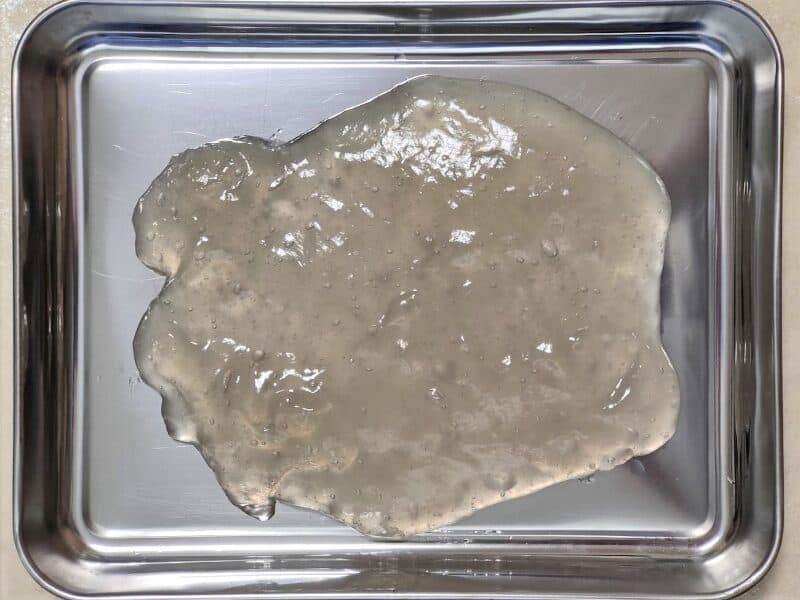
Step 4
Transfer the mixture to a container and let it cool for at least 10 minutes. After that, place the container in the refrigerator or an ice bath, and chill for about 20 minutes.
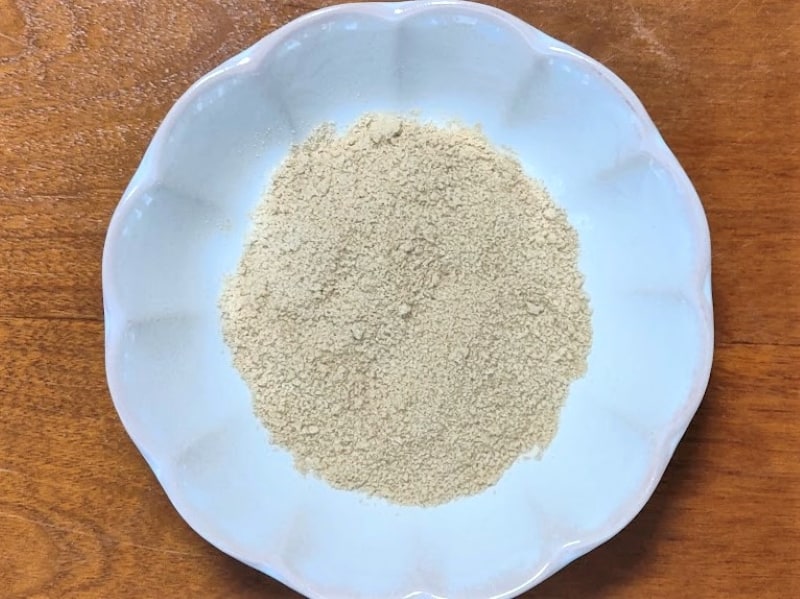
Step 5 (optional)
In a small bowl, mix kinako and sugar thoroughly. (If you plan to use kuromitsu as a topping, you can skip this step, as it may make the warabi mochi too sweet.)
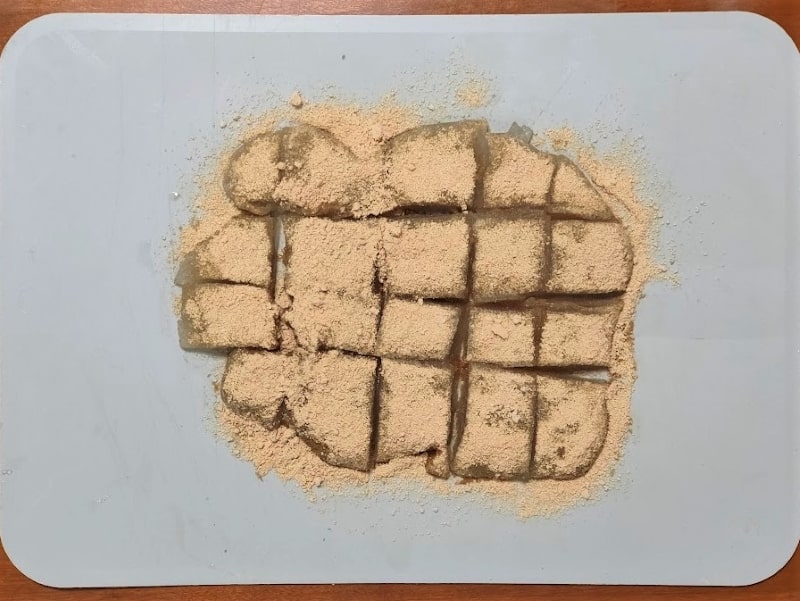
Step 6
Take the container out of the refrigerator (or ice bath) and sprinkle the kinako mixture (or plain kinako) over the warabi mochi. Then, cut it into bite-sized pieces.
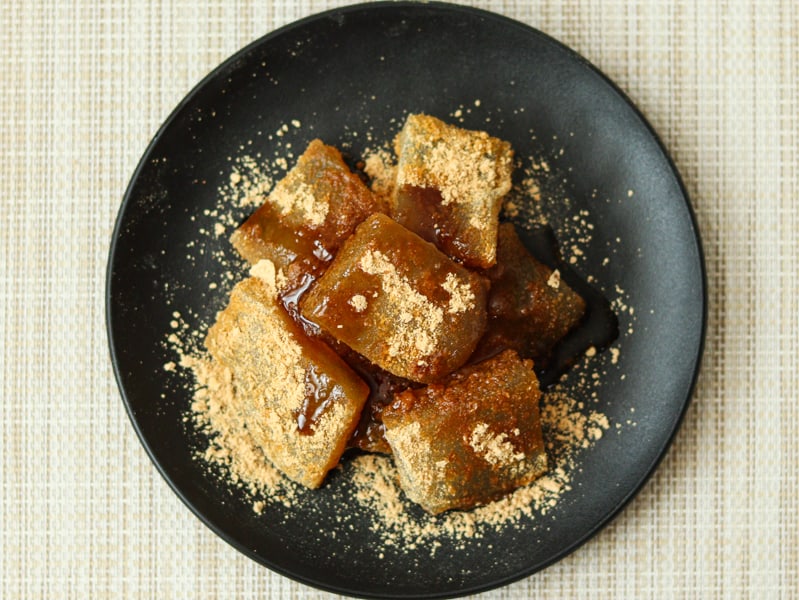
Step 7
Serve on plates and drizzle with kuromitsu to taste.
To store
You can store it in the refrigerator for up to 2 days. However, it is best to eat it as soon as possible because its texture may deteriorate over time. Freezing is not recommended.
Additionally, if you are using warabiko instead of warabi mochiko, please note that it has a shorter shelf life. It should be kept at room temperature and eaten on the same day it is made.
Cooking tips
- Avoid refrigerating the warabi mochi for too long in step 4. It tends to harden when chilled excessively.
- Sprinkle kinako just before eating. If you store the warabi mochi with kinako already on it, the kinako will absorb moisture and affect its texture.
Matcha flavor variations
Warabi mochi is also popular in a matcha-flavored version. To make matcha-flavored warabi mochi, simply add 1 teaspoon of matcha powder for every 2 servings in step 1. There is no need to adjust the other ingredients.
Additionally, you can make matcha-flavored kinako (roasted soybean flour) by mixing 1 teaspoon of matcha powder into the kinako for every 2 servings in step 5.
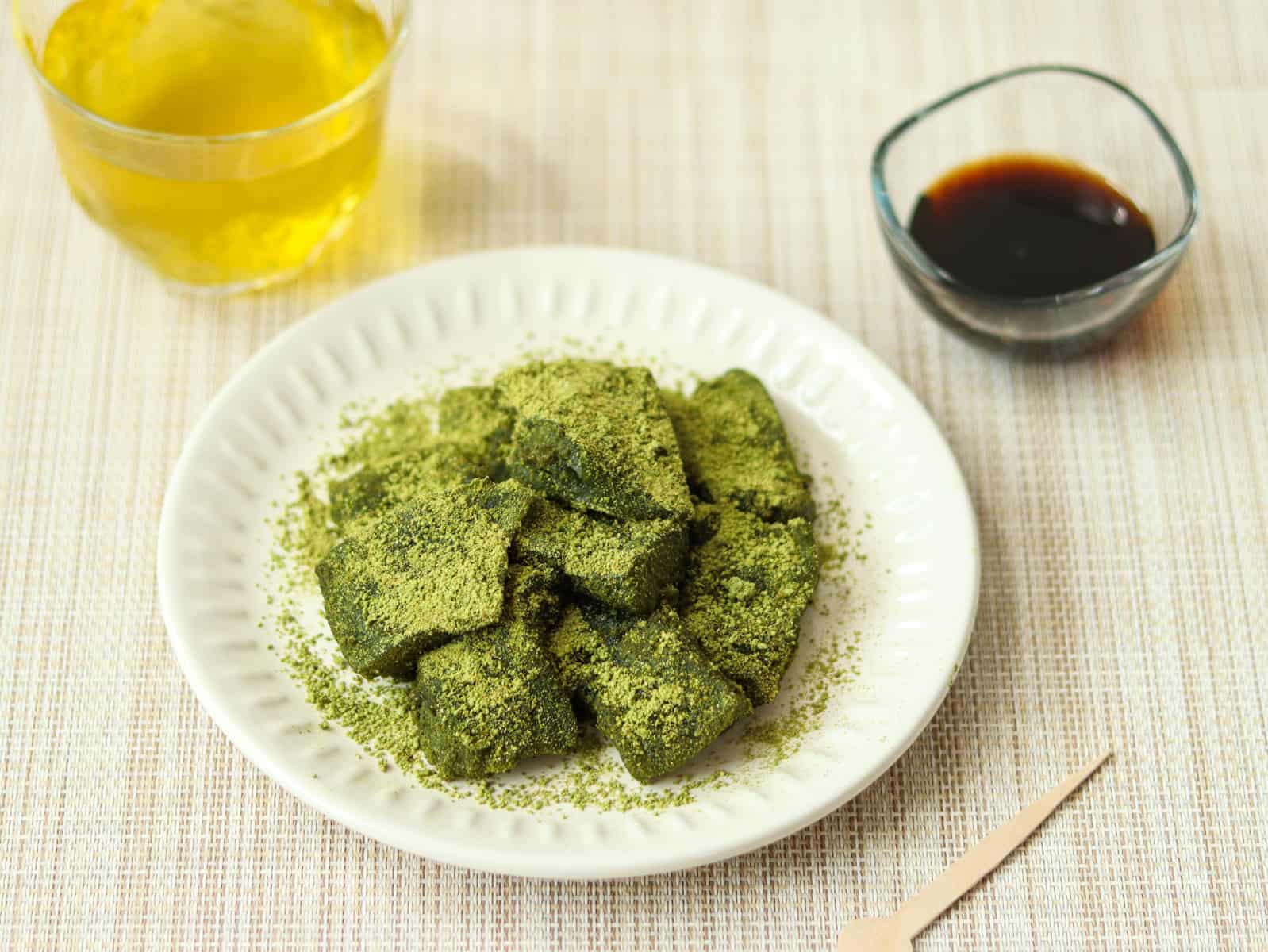
If you try this recipe, I’d love to hear what you think. Please consider leaving a review and star rating in the comments below. If you enjoyed it, I’d really appreciate it if you shared it with your friends.
More traditional Japanese sweet recipes you'll love
Recipe card

Warabi Mochi
Ingredients
- 1.8 oz warabi mochiko or warabiko (bracken starch)
- 2 Tbsp sugar
- 1 ¼ cups water
Toppings:
- 1 Tbsp kinako (roasted soybean flour)
- 2 tsp sugar (optional, omit if serving with kuromitsu)
- 2 Tbsp kuromitsu (brown sugar syrup) (optional, omit if serving with sugared kinako)
Instructions
- Combine warabi mochiko (or warabiko), sugar, and water in a pot.
- Heat the pot over medium heat, stirring constantly with a spatula until the mixture starts to thicken.
- Reduce the heat to low and continue stirring until the mixture gradually solidifies and turns translucent. Keep stirring for a few more minutes after it becomes clear, then remove from the heat.
- Transfer the mixture to a container and let it cool for at least 10 minutes. After that, place the container in the refrigerator or an ice bath, and chill for about 20 minutes.
- (Optional) In a small bowl, mix kinako and sugar thoroughly. (If you plan to use kuromitsu as a topping, you can skip this step, as it may make the warabi mochi too sweet.)
- Take the container out of the refrigerator (or ice bath) and sprinkle the kinako mixture (or plain kinako) over the warabi mochi. Then, cut it into bite-sized pieces.
- Serve on plates and drizzle with kuromitsu to taste.
Notes
- You can store it in the refrigerator for up to 2 days. However, it is best to eat it as soon as possible because its texture may deteriorate over time. Freezing is not recommended. Additionally, if you are using warabiko instead of warabi mochiko, please note that it has a shorter shelf life. It should be kept at room temperature and eaten on the same day it is made.
- If you want to make a matcha-flavored version, add 1 tsp of matcha powder for every 2 servings in step 1.
- For matcha-flavored kinako, mix 1 tsp of matcha powder into the kinako for every 2 servings in step 5.

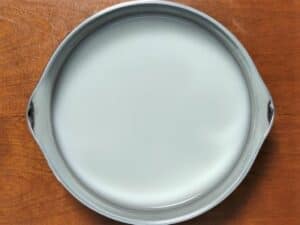
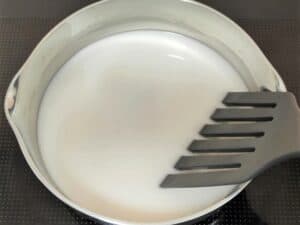
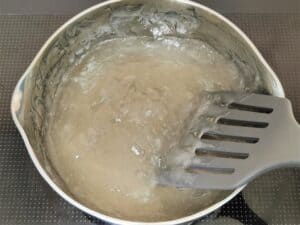
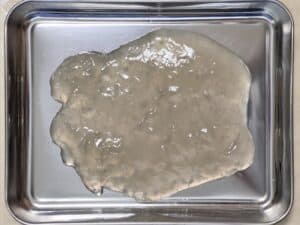
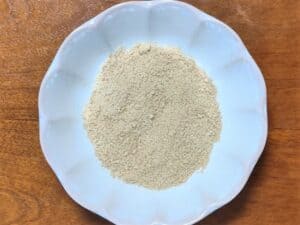
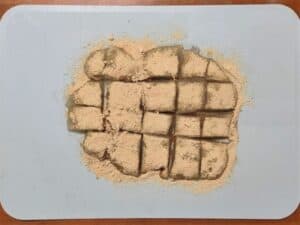
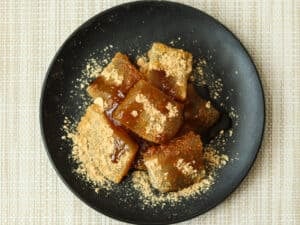
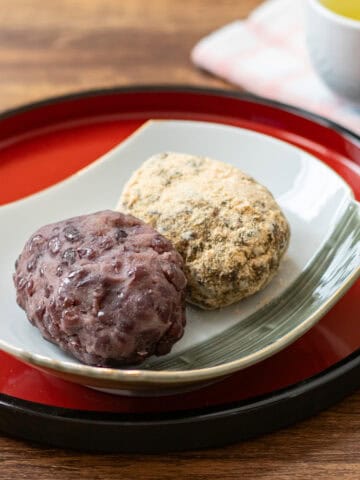
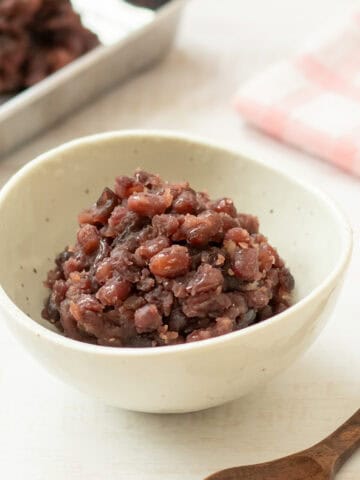
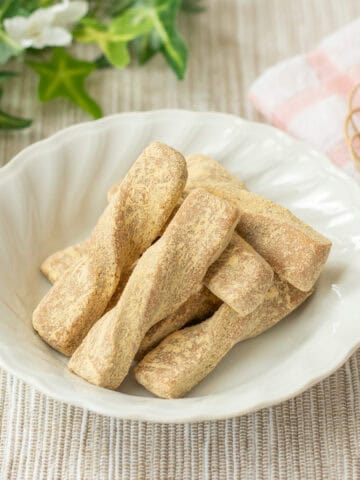
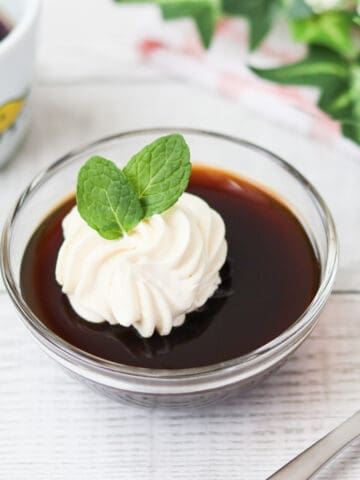
Leave a Rating and a Comment